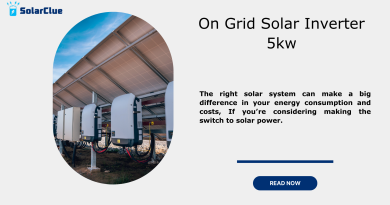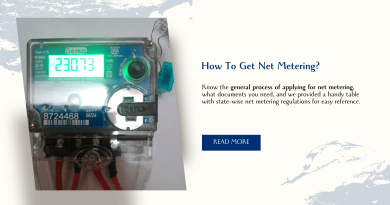What Is A Grid Connected Solar Rooftop System 3
As global awareness about environmental preservation grows, renewable energy solutions like solar energy are becoming increasingly popular. One innovative model of tapping into this renewable energy resource is the Grid-Connected Solar Rooftop System. This system is widely recognized for its effectiveness, cost-efficiency, and environmental benefits. In order to fully grasp its implications and benefits, it’s crucial to understand what exactly a Grid-Connected Solar Rooftop System is and how it works.
Table of Contents
Defining The Grid-Connected Solar Rooftop System
A Grid-Connected Solar Rooftop System, or Grid-Tied Solar System, is a photovoltaic (PV) system that generates electricity from the sun with the help of solar panels mounted on the rooftop of a building and connected to the local electrical grid. This type of system is designed to provide a dual advantage: it allows homeowners to generate their own electricity, while maintaining a connection to the grid for any supplementary power needs or injection of excess power.
Components of The Grid-Connected Solar Rooftop System
The Grid-Connected Solar Rooftop System is made up of a few primary components. First and foremost, the solar panels mounted on the rooftop capture sunlight and convert it into direct current (DC). This DC power can’t be used directly in most homes or businesses, and so it’s passed through a device called an inverter. The inverter transforms DC power into alternating current (AC), which can be used to power electrical appliances.
The next crucial component is the meter. This system uses a special net meter, a device that logs the power supplied to the grid and the power consumed from the grid. It spins forward when power is being imported from the grid (when solar production is low), and backward when power is being exported (when solar production is high).
How Does Grid-Connected Solar Rooftop System Work
The Grid-Connected Solar Rooftop System operates based on a simple process. Solar panels on the roof convert sunlight into electricity throughout the day. In addition to supplying electricity to the connected building, this system also feeds surplus electricity back to the grid when there is excess generation. Conversely, when the solar panels don’t produce enough electricity to meet demand—for instance, at night or during cloud cover—the system draws needed power from the grid.
Balancing home or business electrical requirements with grid supply, this system ensures that the connected building remains powered at all times, while making optimal use of solar electricity. This structure proves to be an efficient and reliable choice for those aiming for energy independence, monetary savings, and a move towards sustainability.
Benefits of Grid-Connected Solar Rooftop System
A Grid-Connected Solar Rooftop System brings a multitude of benefits for homeowners and businesses. One direct benefit is a significant reduction in electricity bills due to the self-generation of electricity. Moreover, any excess power generated can often be sold back to the grid, creating a potential income stream.
Additionally, this setup contributes to reducing the building’s carbon footprint, given solar energy is a renewable, clean source of electricity. It also enhances energy reliability, as the combination of solar generation and grid connectivity offsets any risk of power shortfalls.
Furthermore, technological advancements have resulted in more efficient and affordable solar panels and equipment, making the initial cost of installation more accessible. There are also numerous government grants and incentives available to households and businesses, making the switch to a Grid-Connected Solar Rooftop System an even more attractive proposition.
Conclusion
The Grid-Connected Solar Rooftop System is a remarkable innovation in renewable energy infrastructure, offering energy independence, cost-effectiveness, and an important step towards a more sustainable future. By understanding its components, working principles, and associated benefits, we can make an informed decision about its adoption and contribute our bit in steering the world towards more sustainable energy practices.




